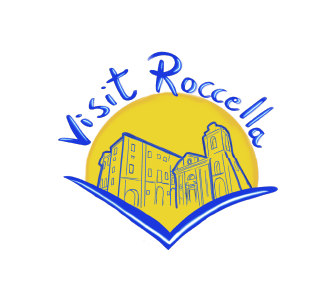tranlsated with AI
The Church of St. Joseph, formerly the Immaculate Conception, was built by the first prince of Roccella, Fabrizio Carafa, at his own expense and by his own will.
From the foundation act of the Church, with an attached convent, drawn up by the notary Nicola Cappelleri, an excerpt is transcribed: “…on the 13th of April 1614, we gathered at the request of the Mayor Fabrizio Caristo, in a public procession with all the Reverend Clergy of the Land of Roccella, with the Confraternities, with the people of men and women and in the presence of the Excellency of Mr. Girolamo Carafa, Marquis of Castelvetere (future II prince of Roccella), of the illustrious Mr. Giovanni Battista, of Mr. Vincenzo (future Duke of Bruzzano), of Mr. Francesco Carafa (he will be the 1st Prior of the Gerosolomite Order of Roccella), sons of the most excellent Lord Prince, of the whole family and of the Court, and Father Bonaventura of Gerace, Provincial Responsible of the Order of the Reformed…”.
For over a century and a half, the conventuals of the attached cenoby officiated at its altars, with daily frequency, masses requested by the faithful of Roccella and the surrounding area. From the Church’s registers, preserved in the archives, about 790 masses were counted every year in the period 1767-84.
Among others: “one mass a week on Tuesday at the Altar of St. Anthony for the late Prince D. Vincenzo Carafa”, also: “Four masses a week for the late Lady Princess Donna Diana (Vittoria Borgese, niece of Pope Paul V) at the altar of St. Anthony”.
The church, at that time, had six altars besides the “Privileged” one, dedicated to the Immaculate Conception. In four of them there were the painting of St. Francis of Assisi, the painting of St. Paschal, the statue of St. Anthony of Padua, and a large wooden Crucifix. The earthquake of 1783 damaged the Church: “…it has some small cracks, and the choir located on the main door went entirely destroyed”.
The government provisions of 1784 and the establishment of the Sacra Cassa, ordered the closure of the Church of the Conception, on May 30, 1784. It wasn’t until 1798 that the aforementioned Church was reopened for worship.
On January 29, 1798, it was reopened for worship and Royal Assent was granted for the foundation of the Confraternity of St. Joseph and the Souls of Purgatory.
Over time, the ancient dedication was abandoned, assuming the current one dedicated to the patriarch St. Joseph.
From its construction, it was used as a Cemetery Church, with private and gentilic tombs distributed throughout its floor: Nanni, Totino, Cappelleri, Manfrè, Congiusta, and at the entrance of the Parvulorum.
Under the floor of the current sacristy is the common grave.
In the early 1800s, this church was endowed with a valuable statue of St. Joseph, the work of the sculptor from Serra, Vincenzo Scrivo.
The artistic beauty of this Sculpture did not escape the wrongdoers, who, on the night of June 19, 1994, staged an accidental fire in the church, right in the place where this statue was exhibited, to make it appear as destroyed by the fire. It didn’t take long to discover the theft of the work, given the small amount of ash produced in the same space.
In 1951, a disastrous flood made the Church unusable, evident cracks and dangerous lesions along the facade forced the authorities to close it.
The faithful of the “Croce” district did not accept the end of the centuries-old church and, thanks to their initiative, self-taxing themselves and offering days of work for free, they managed to save the part near the main altar (the one visible today) but unfortunately failing to recover the ancient facade and the damaged front part, which was completely collapsed, shortening the church by over six meters.
Inside the Church, the personal coat of arms of the first Prince of Roccella, Fabrizio Carafa, stands out for its documentary and artistic value, perfectly preserved. It is composed of a shaped-semicircular shield, red with three silver bands with a green thorn placed in bend; the shield is crowned by the crown of the Holy Roman Empire and topped by a two-headed eagle holding the collar of the Order of the Golden Fleece in its beak, all surmounted by a crown of five fleurons.
Another precious piece that embellishes the Church is the Privileged Altar: a work commissioned by the last prince of Roccella, Vincenzo Maria Carafa Cantelmo Stuart, and his wife Livia Doria del Carretto, in the years they lived in Roccella (1770-72). The commission is attested by the signature left at the base of the two side columns of the altar: the coats of arms of the Carafa and Doria families. Today only the princess’s coat of arms is visible, while that of the Carafa was destroyed on the night of the fire in 1994.
Also to admire is the painting of the Immaculate Conception, which at that time was placed on the main altar, attributable according to experts to the Neapolitan school of Luca Giordano from the second half of the 1600s. This work, oil on canvas, is currently located along the right wall of the Church, to make room on the Privileged Altar for the painting of St. Joseph and the Souls of Purgatory, after the establishment of the homonymous Confraternity.
The Convent of the Order of Friars Minor, founded by St. Francis of Assisi and attached to the Church of the Immaculate Conception, was built by Prince Fabrizio Carafa in 1614. It consists of a simple cloister, typical of Franciscan convents, with its portico around the four sides of a courtyard with a central “well”. One side of the portico was attached to the Church, while on the other three, the conventuals’ cells were distributed.
